A Comprehensive Guide to Day Trading: Strategies, Risks, and Getting Started
Embarking on the journey into the world of day trading can feel both exciting and daunting. Unlike traditional long-term investing, where you might hold assets for years or even decades, day trading operates on a completely different timescale. Here, you’re aiming to capitalize on rapid, short-term price movements, often closing all your positions before the trading day ends. It’s a dynamic, fast-paced environment that demands sharp focus, quick decision-making, and a deep understanding of market mechanics.
- Day trading requires fast execution and real-time information.
- It involves the trading of various tools, including stocks, options, futures, and cryptocurrencies.
- Success in day trading relies heavily on technical analysis rather than fundamental analysis.
Think of it not just as buying and selling, but as actively participating in the market’s constant flux. You’re attempting to predict which way a security’s price will tick in the minutes or hours ahead, rather than forecasting its value months or years down the line. This guide is designed to walk you through the fundamentals, providing you with the knowledge and perspective required to understand if this demanding pursuit aligns with your financial goals and temperament.
We’ll delve into what day trading truly entails, the essential prerequisites you must meet, the critical strategies successful traders employ, the significant risks involved, and the tools you’ll need at your disposal. Our goal is to demystify some of the complexity, helping you build a solid foundation of understanding before you even consider placing your first trade with real capital.
What Exactly is Day Trading? Defining the Active Approach
At its core, day trading is a form of active trading where financial instruments are bought and sold within the same trading day. All positions are typically closed before the market closes to avoid overnight risks and potential price gaps that can occur when markets reopen. The primary objective is to generate profits from small price changes throughout the day, often leveraging volatile conditions.
| Aspect | Description |
|---|---|
| Timeframe | Intraday, typically closing trades by the end of the day. |
| Objective | Profit from small price changes. |
| Risk | Inherently risky, often leading to quick losses for beginners. |
While the concept is simple – buy low, sell high (or vice versa) – the execution is anything but. It requires a significant understanding of market dynamics, the ability to interpret price charts in real-time, and a keen awareness of factors that can suddenly influence asset prices. Unlike investors who might conduct fundamental analysis on a company’s long-term prospects, day traders rely heavily on technical analysis and short-term market events.
What kind of assets do day traders focus on? While stocks are common, day trading extends to other securities and instruments such as options, futures, currencies (Forex), and even cryptocurrencies like Bitcoin. The choice of asset often depends on the trader’s preferences, capital, and the specific market’s volatility and trading hours.
The key difference between day trading and traditional investing lies in the time horizon and frequency of trades. Investors are long-term thinkers, focusing on growth or income over extended periods. Day traders are short-term operators, seeking to profit from intraday price fluctuations. This high frequency of trading means that even small percentage gains per trade can accumulate, but conversely, small percentage losses can also mount rapidly.
Is Day Trading Right for You? Assessing the Prerequisites
Before you even think about day trading, it’s crucial to conduct an honest self-assessment. Day trading is not a hobby; it’s a demanding activity that requires a specific mindset and considerable resources. It’s often portrayed in media as a glamorous path to quick riches, but the reality for most is very different.
First, you need a significant amount of readily available risk capital – money you can afford to lose entirely without impacting your financial security. This is perhaps the most critical prerequisite. Why? Because day trading is inherently risky, and losses are a common, often frequent, occurrence, especially for beginners. You should never day trade with money intended for essential expenses like rent, mortgage payments, or savings.
Second, you need substantial market knowledge. This isn’t just a passing interest in finance. It requires understanding how markets work, the factors that drive prices, how to read charts, interpret indicators, and stay informed about economic news and corporate events. You’ll need to grasp concepts like volume, float, support and resistance levels, and various chart patterns.
Third, time commitment is non-negotiable. Day trading requires active participation during market hours. This is often a full-time endeavor, demanding your attention for several hours each day, analyzing charts, monitoring news feeds, and executing trades. If you have a full-time job or other significant commitments during market hours, day trading may not be feasible for you.
Fourth, you must possess robust psychological resilience and strict trading discipline. Emotional control is paramount. Fear, greed, impatience, and the urge for revenge trading after a loss can quickly derail your strategy and lead to significant financial damage. Sticking to your predefined trading plan, regardless of immediate outcomes, is vital.
Consider these points carefully. Do you have the necessary capital? Are you willing to dedicate the significant time required to learn and trade? Do you have the emotional fortitude to handle frequent losses without letting them influence your decisions? Answering these questions honestly is your first step.
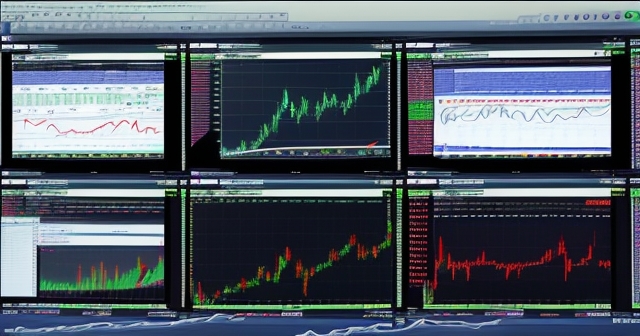
The $25,000 Question: Understanding the Pattern Day Trader Rule
For retail traders in the United States, a critical regulation governs frequent day trading in a margin account: the Pattern Day Trader (PDT) Rule. Established by the Financial Industry Regulatory Authority (FINRA), this rule significantly impacts who can day trade and with what capital.
The PDT Rule defines a pattern day trader as anyone who executes four or more day trades within five business days in a margin account, provided the number of day trades represents more than six percent of the total trades in the account during that period. If you trigger this rule, you are then classified as a pattern day trader.
| Category | Requirement |
|---|---|
| Pattern Day Trader | Execute 4 or more day trades in 5 days. |
| Minimum Equity | Maintain at least $25,000 in your account. |
The key consequence of being classified as a pattern day trader is the requirement to maintain a minimum account equity of $25,000 at the close of business on any day that you day trade. If your account equity drops below this threshold, you will receive a margin call and will not be permitted to day trade until the account is restored to the $25,000 minimum.
What does this mean for you? If you have less than $25,000 in your margin account, you are severely restricted in the number of day trades you can execute. Exceeding the limit will result in being flagged as a pattern day trader and potentially facing restrictions or account freezes. This rule is a significant barrier for many aspiring retail day traders and highlights the substantial capital requirement for operating without these restrictions.
It’s important to note that this rule primarily applies to margin accounts trading stocks and options. Trading cash accounts or certain futures and Forex markets may have different regulations. However, for many seeking to day trade US equities or options with leverage, understanding and adhering to the PDT Rule is absolutely crucial.
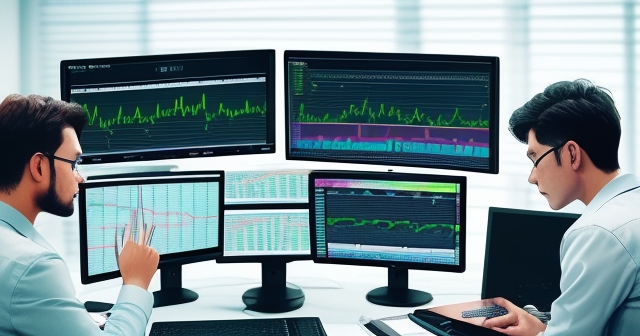
Building Your Foundation: Knowledge, Tools, and Brokers
Successful day trading requires more than just capital and a willingness to take risks. It demands a strong foundation built on knowledge, the right tools, and a reliable partner in the form of your broker.
Your knowledge base needs to be extensive. While day traders lean heavily on technical analysis, understanding the basics of fundamental analysis and macroeconomics can also provide valuable context. Technical analysis involves studying historical price charts and trading volume to identify patterns and predict future price movements. You’ll need to become proficient in reading various chart types (like candlestick charts), understanding technical indicators (such as moving averages, RSI, MACD), and recognizing common chart patterns (like flags, pennants, head and shoulders).
| Tool | Usage |
|---|---|
| Stock Scanner | Filters securities based on specific characteristics. |
| Trading Platform | Used to analyze charts and execute trades. |
| Real-Time News Feed | Provides updates on market influences and news events. |
Equally important is selecting a reputable broker and a robust trading platform. Your broker is your gateway to the market, and they provide the platform you’ll use to analyze charts, monitor prices, and execute trades. For day trading, where speed and reliability are critical, you need a broker that offers:
- Fast order execution
- Access to real-time data and news feeds
- Competitive commissions and fees
- Reliable and stable trading software
- Access to margin (if trading margin accounts)
- Good customer support
Trading platforms vary significantly. Some are browser-based, while others are downloadable desktop applications offering more advanced features. Many brokers offer different platforms, including popular options like MT4, MT5, and proprietary platforms. If you’re considering trading Forex or exploring a wide range of CFD instruments, then selecting a platform that offers flexibility and technical superiority becomes even more crucial.
If you’re considering beginning your journey into Forex trading or exploring diverse CFD instruments, then Moneta Markets presents itself as a platform well worth evaluating. As an Australian-based entity, it boasts access to over 1000 financial instruments, catering effectively to both novice participants and seasoned traders seeking comprehensive market exposure.
Beyond the platform itself, you’ll need specialized tools. A stock scanner is essential for filtering thousands of securities to identify those exhibiting specific characteristics suitable for day trading, such as high volume, significant price changes, or relative strength/weakness. Real-time news feeds provide instant updates on economic data, corporate announcements, and breaking events that can trigger volatile price moves.
Navigating the Markets: Key Day Trading Strategies
There isn’t a single “best” way to day trade. Successful traders often specialize in one or a few strategies that fit their personality, capital, and the specific market conditions. Understanding the different approaches will help you find one that might resonate with you.
One common strategy is momentum trading. This involves identifying securities whose prices are moving strongly in one direction, fueled by high volume or recent news. The goal is to jump into the trend and ride it for a short period, exiting when the momentum shows signs of slowing or reversing. This strategy requires quick identification and execution.
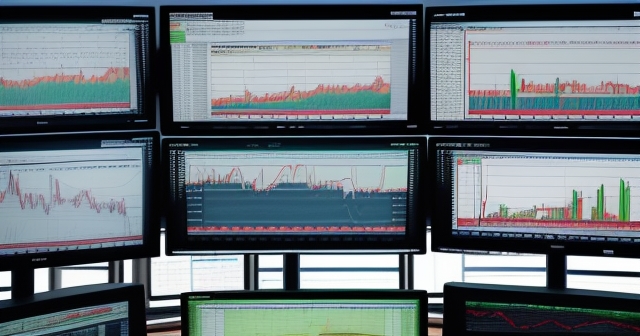
Another prevalent approach is technical analysis-based trading. Traders using this method rely almost exclusively on chart patterns, indicators, and historical price data to make decisions. They might look for breakouts from specific chart formations, crossovers of moving averages, or signals from oscillators like the Relative Strength Index (RSI) to time their entries and exits.
Trading the news is a strategy focused on capitalizing on volatility generated by scheduled economic reports (like the Jobs Report or interest rate decisions from the Federal Reserve), corporate earnings announcements, or unexpected breaking news events. This requires rapid analysis and execution as prices can move violently in seconds or minutes following a significant announcement.
Other strategies include:
- Scalping: Executing many trades throughout the day, aiming for very small profits per trade, often holding positions for seconds to minutes.
- Reversal Trading: Attempting to identify when a trend is exhausting itself and trading in the opposite direction. This is often counter-trend and requires significant skill and confirmation signals.
- Arbitrage: Exploiting tiny price differences for the same asset on different exchanges. This is typically done by sophisticated automated systems due to the speed required.
Choosing a strategy is just the beginning. You need to thoroughly understand its underlying principles, test it rigorously (preferably with paper trading first), and execute it consistently without deviating based on emotion.
Strategy Deep Dive: Technical Analysis and Momentum
Let’s explore technical analysis and momentum trading in a bit more detail, as they form the backbone of many day trading approaches.
Technical analysis is the study of price movements and patterns on charts. Traders believe that historical price data and trading volume can provide clues about future price behavior. They use tools like:
- Candlestick Charts: These visually represent the open, high, low, and close price for a specific time period (e.g., 1-minute, 5-minute, 15-minute candles). The color and shape of the candle can indicate buying or selling pressure.
- Moving Averages: Lines on a chart representing the average price over a specific number of periods. They help identify trends and potential support/resistance levels.
- Oscillators: Indicators like RSI, MACD, and Stochastic Oscillators that measure momentum or overbought/oversold conditions, often appearing below the main price chart.
- Volume: The number of shares or contracts traded during a period. High volume often confirms the strength of a price move or a breakout.
- Support and Resistance: Price levels where buying pressure is expected to be strong (support) or selling pressure is expected to be strong (resistance), potentially halting or reversing a trend.
Momentum trading leverages the idea that assets that are already moving strongly in one direction are likely to continue moving in that direction for a period. Traders look for securities with:
- High relative volume compared to their average volume.
- Significant percentage price changes early in the day (Gaps).
- Clear upward or downward trends on short-term charts (e.g., 1-minute, 5-minute).
- Positive or negative news catalysts.
Combining technical analysis with momentum involves using chart patterns and indicators to identify potential entry points in a stock that is showing strong momentum. For instance, a trader might look for a bullish flag pattern forming on a 5-minute chart of a stock that has gapped up significantly at the open with high volume. The breakout from the flag might be the signal to enter the trade, aiming to ride the next leg of the price move.
Mastering these techniques requires hours of screen time studying charts, understanding how different indicators behave in various market conditions, and practicing identification skills. It’s a visual and analytical process that becomes more intuitive with experience.
Trading the News: Capitalizing on Volatility
News events, whether scheduled or unexpected, can trigger significant and rapid price movements, creating opportunities for skilled day traders. This strategy focuses on understanding *how* markets react to information and positioning yourself to potentially profit from the resulting volatility.
Scheduled news events include:
- Economic Data Releases: Reports like the Nonfarm Payroll Employment (Jobs Report), Consumer Price Index (CPI), GDP figures, and retail sales data are released on set schedules and can dramatically impact currency markets, indices, and individual stocks.
- Central Bank Announcements: Decisions and statements from central banks like the Federal Reserve (Fed) regarding interest rates and monetary policy are closely watched and can cause major market shifts.
- Corporate Earnings Reports: Publicly traded companies release quarterly reports detailing their financial performance. Earnings surprises (beating or missing analyst expectations) and forward guidance can lead to massive price swings in individual stocks.
- Analyst Ratings and Upgrades/Downgrades: Investment bank analysts changing their recommendations for a stock can also move its price.
Breaking news is often less predictable. This could be anything from geopolitical events, natural disasters, sudden company announcements (like a merger or scandal), or even influential social media posts. Remember the example from the source material regarding NBEV? A seemingly unrelated news piece (Kendall Jenner’s involvement with a product) triggered significant interest and price volatility in the stock. Trading such events requires extreme speed and access to reliable, real-time news feeds.
Trading news involves anticipating the potential reaction, executing trades quickly as the news breaks, and managing risk effectively because the moves can be sharp and unpredictable. Traders might use specific order types like limit orders or stop orders (stop-losses) to manage entries and exits around the news release. Sometimes, the volatility is so high that trading is temporarily halted by Circuit Breaker Halts (LULD), giving traders a moment to re-evaluate.
This strategy is high-risk and requires intense focus during the news release. It’s not about predicting the news itself, but predicting *how the market will react* to the news. This reaction can sometimes be counter-intuitive, adding another layer of complexity.
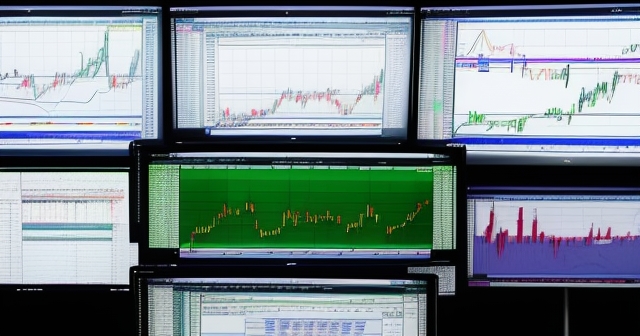
The Cornerstone of Success: Risk Management
If day trading were a building, risk management would be its foundation and structural support. Without it, the entire structure is bound to collapse. Given the frequency of trades and the inherent volatility, protecting your capital is not just important; it is absolutely critical.
What exactly is risk management in day trading? It’s a set of strategies and rules you implement *before* entering a trade to limit potential losses and protect your trading capital. The primary goal is survival – ensuring that no single trade or series of trades can wipe out a significant portion of your account.
| Strategy | Description |
|---|---|
| Defining Risk | Limit risk per trade to a small percentage of total capital. |
| Stop-Loss Orders | Automatic sell orders to limit losses on trades. |
| Profit Targets | Predefined price levels to secure profits. |
Key components of effective risk management include:
- Defining Your Risk Per Trade: Decide in advance how much of your total capital you are willing to lose on any single trade. A common rule of thumb is risking no more than 1% or 2% of your account equity per trade. This means if you have a $30,000 account, you might risk $300 to $600 on one setup.
- Setting Stop-Loss Orders: A stop-loss order is an instruction to your broker to sell a security if it reaches a specific price. This limits your potential loss on a trade. Once you enter a trade, you should know your exit plan if the price moves against you, and a stop-loss is your automatic protection.
- Defining Your Profit Target: Just as you define your exit if the trade goes wrong, you should define your target price where you will take profits. This helps prevent greed from keeping you in a winning trade for too long, only to see it reverse.
- Establishing a Risk/Reward Ratio: This is the ratio of your potential loss (distance to your stop-loss) to your potential gain (distance to your profit target). A favorable ratio, such as 1:2 or 1:3 (risking $1 to potentially make $2 or $3), is crucial. Even if you don only win 50% of your trades, a positive risk/reward ratio can help you remain profitable overall.
- Managing Leverage and Margin: While margin can amplify potential profits, it also significantly magnifies potential losses. Understand how margin works, the associated risks, and avoid over-leveraging your account, which can lead to devastating margin calls.
- Avoiding “Going on Tilt”: This relates to trading psychology but is a risk management issue. Do not chase losses by taking impulsive, larger-than-planned trades after a losing streak. Stick to your rules.
Risk management isn’t exciting, but it’s the single most important factor in long-term day trading success. A skilled trader with poor risk management will eventually fail, while a less skilled trader who strictly adheres to risk controls might survive long enough to improve.
The Mental Game: Mastering Trading Psychology
Day trading isn’t just about charts, news, and strategies; it’s deeply psychological. Your emotions can be your biggest enemy, leading you to make irrational decisions that sabotage your well-thought-out plans. Mastering your trading psychology is just as important as mastering market analysis.
Common psychological pitfalls for day traders include:
- Fear of Missing Out (FOMO): Seeing a stock’s price skyrocket and jumping in impulsively without a valid trading signal, often right before a reversal.
- Fear of Loss: Being paralyzed by fear and failing to take a valid trade setup, or exiting a winning trade too early due to fear of giving back profits.
- Greed: Holding onto a winning trade for too long, hoping for an even bigger profit, and watching it turn into a loser.
- Hope: Holding onto a losing trade, hoping it will turn around, instead of cutting your losses quickly according to your stop-loss.
- Revenge Trading: After a loss, immediately trying to make it back by taking larger or riskier trades, often leading to more losses.
- Emotional Attachment: Becoming emotionally attached to a specific stock or trade, clouding your judgment.
To combat these emotions, you need strict trading discipline. This means:
- Having a Trading Plan: Document your strategies, entry/exit criteria, risk management rules, and daily goals/limits.
- Sticking to the Plan: This is the hard part. Execute trades only when they meet your plan’s criteria. Exit trades when your stop-loss is hit or your profit target is reached, regardless of how you “feel.”
- Maintaining Objectivity: Base decisions on your analysis and plan, not on hope, fear, or excitement.
- Reviewing Your Performance: Keep a trading journal. Analyze your trades (both winners and losers) to identify patterns in your decision-making, both technical and psychological.
- Taking Breaks: If you’re experiencing emotional turmoil or a string of losses, step away from the screen. Give yourself time to clear your head.
Understand and accept that losses are an unavoidable part of day trading. Not every trade will be a winner. The goal is not to win every trade, but to be profitable *overall* by managing losses and letting winners run (within your plan). The reality is, for most people, consistently profitable day trading is incredibly difficult, and most day traders lose money.
Essential Tools and Resources for Daily Operations
To effectively implement day trading strategies, you’ll need a suite of reliable tools and resources. These are not optional extras; they are fundamental requirements for executing trades efficiently and accessing the real-time information needed to make informed decisions.
We’ve already touched upon trading platforms and brokers, but let’s consider the broader ecosystem of tools:
- High-Speed Internet Connection: A stable and fast internet connection is critical. Even milliseconds of delay can mean missing an entry or exit point in fast-moving markets.
- Multiple Monitors: Day traders often use several monitors to display charts for multiple securities, their trading platform, news feeds, and scanners simultaneously.
- Stock Scanners: These are programs or features within platforms that continuously scan the market based on criteria you set (e.g., volume, price change, specific technical patterns). They are invaluable for identifying potential trading opportunities quickly from thousands of available securities. Some examples mentioned in the source material include identifying securities with high relative volume or those with a significant price gap at the market open.
- Real-Time News Feeds: Access to a fast and reliable news source is vital, especially for news trading strategies. This could be a professional news terminal, a news feed integrated into your trading platform, or a dedicated news service.
- Charting Software: While most trading platforms have charting capabilities, dedicated charting software can offer more advanced features, indicators, and customization options for in-depth technical analysis.
- Trading Journal Software: Tools that help you log your trades, track performance metrics, and analyze your history are crucial for learning and improving.
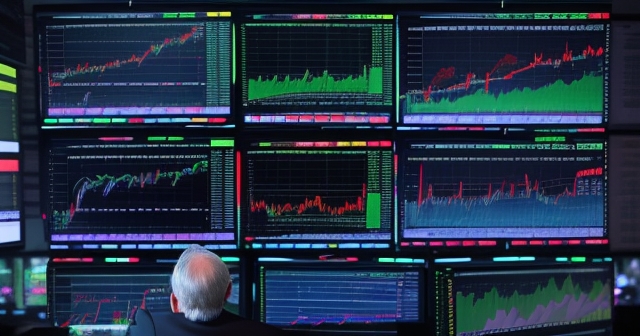
When choosing a trading platform and broker, consider not just commissions but also the reliability and speed of their software and data feeds. For flexibility and technical capability across various instruments including Forex and CFDs, the platform choice is paramount.
In the context of platform selection, particularly if you’re exploring global markets or specific instruments like Forex, the flexibility and technical advantages provided by Moneta Markets are noteworthy. Their support for leading platforms such as MT4, MT5, and Pro Trader, coupled with efficient execution speeds and competitive spreads, is designed to enhance the trading experience significantly.
Educational resources are also vital. Access to webinars, tutorials, articles, and potentially a community or chat room of experienced traders can accelerate your learning curve. However, be wary of services promising guaranteed profits; focus on those that emphasize education, risk management, and the challenging reality of day trading.
The Path Forward: Practice and Preparation
Given the complexities and risks involved, jumping directly into day trading with real money is akin to trying to fly a plane without any training. Practice and preparation are essential before you commit any significant capital.
The most common and effective way to practice is through paper trading, also known as simulation trading. Most brokers offer paper trading accounts that allow you to trade with virtual money in a simulated market environment. This allows you to:
- Learn how to use your broker’s trading platform.
- Test your trading strategies in real-time market conditions without risking capital.
- Develop your execution skills.
- Practice your risk management techniques.
- Experience the psychological ups and downs of trading without financial consequence.
You should spend a significant amount of time paper trading – potentially months – until you can demonstrate consistent profitability in the simulator. Even then, the transition to live trading with real money can be challenging due to the added psychological pressure.
When you do transition to live trading, start small. Use a minimal amount of capital and trade smaller share sizes. The goal initially is not to make large profits, but to successfully implement your trading plan under real market conditions with real money on the line. Gradually increase your trade size as you gain experience and confidence and demonstrate consistent profitability.
Continuous learning is also non-negotiable. The markets are constantly evolving. Stay updated on new strategies, market regulations, technological advancements, and global economic events. Analyze your trades regularly to identify what’s working and what isn’t.
Day trading is a skill that takes time, effort, and dedication to develop. It’s a continuous process of learning, adapting, and refining your approach.
Final Thoughts: Is Day Trading for You?
We’ve explored the intricate world of day trading, from its core definition and demanding prerequisites to key strategies, indispensable tools, and the paramount importance of risk management and psychological discipline. It’s clear that day trading is a challenging pursuit, vastly different from traditional investing.
The potential for quick profits is often what draws people in, but the potential for substantial losses is equally, if not more, significant. It requires not just financial capital (potentially $25,000 or more for unrestricted trading in the US) but also intellectual capital in the form of deep market knowledge, and emotional capital in the form of unwavering discipline and resilience.
We’ve emphasized that most day traders lose money, and results are absolutely not typical. This isn’t meant to discourage you but to ground you in the realistic challenges you will face. Success, for the few who achieve it consistently, comes from relentless preparation, continuous learning, strict adherence to a trading plan, and an iron grip on risk management.
Before you commit your hard-earned money, take the time to educate yourself thoroughly. Practice extensively with paper trading. Build a well-defined trading plan. Understand and accept the inherent risks. Ask yourself honestly if you have the capital, time, and psychological fortitude required.
Day trading is not a guaranteed path to wealth; it is a potential path that demands significant skill, capital, and emotional control. Approach it with respect for the markets and a commitment to rigorous preparation. Only then can you truly assess if this demanding endeavor is the right financial path for you.
guide to day tradingFAQ
Q:What is day trading?
A:Day trading is buying and selling financial instruments within the same trading day to profit from small price changes.
Q:Do I need a lot of money to start day trading?
A:You typically need at least $25,000 in your account to avoid restrictions under the Pattern Day Trader rule.
Q:What kind of tools do I need for day trading?
A:Essential tools include a reliable trading platform, stock scanners, real-time news feeds, and solid risk management strategies.
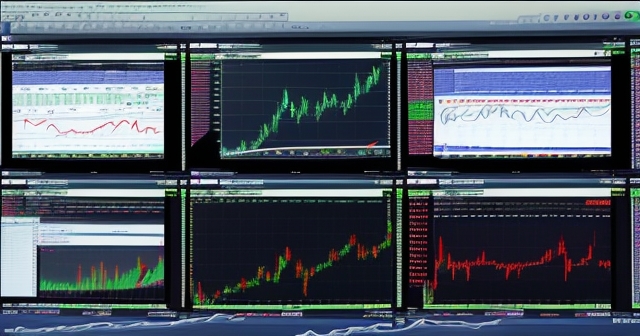
留言